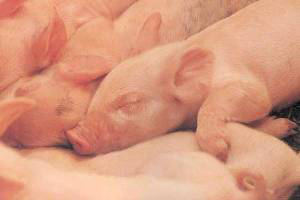Early indicators of iron deficiency in large piglets

Large piglets in a litter are at a higher risk of developing iron deficiency anemia at weaning than are smaller piglets.
Alternative haematological indices might serve as better early indicators of iron deficiency rather than traditionally used hemoglobin values. That in short were the conclusions of Danish research to investigate whether large piglets at weaning have indications of iron deficiency anaemia.
Materials and methods
The study was carried out in five conventional high-performing farrow-finish Danish sow herds. Within each herd, litters belonging to a weekly farrowing batch close to weaning were identified, and 20 litters were randomly selected. From each litter the largest piglet (Large), a random piglet (Random), and the smallest piglet (Small) were chosen. Blood samples collected at weaning from the selected piglets were subjected to hematological analysis, including serum iron and total iron-binding capacity (TIBC).
Results
A total of 296 piglets belonging to 100 litters were included in the study. The blood haemoglobin concentrations in Large, Random, and Small piglets were 119.6 ± 15.5, 121.5 ± 15.0, and 121.5 ± 13.2 g per L, respectively, which did not differ significantly.
However, large piglets had significantly lower mean corpuscular haemoglobin, reticulocyte cellular volume, reticulocyte hemoglobin content, mean reticulocyte corpuscular haemoglobin concentration, serum iron, and transferrin saturation than did Random and Small piglets. In accordance with this, Large piglets had significantly higher red blood cell distribution width, reticulocyte red cell distribution width, and total iron-binding capacity than did Random and Small piglets.
The article was published in the Journal of Swine Health Production. The authors were Sheeva Bhattarai and Dr Jens Peter Nielsen, both connected to the Centre for Herd-oriented Education, Research and Development, Department of Large Animal Sciences, University of Copenhagen, Frederiksberg C, Denmark.











